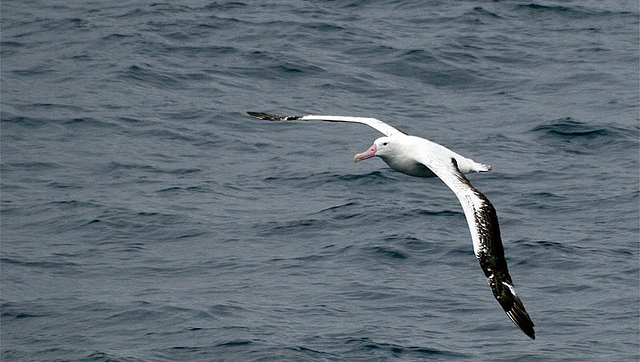 Credit: AntarcticBoy via Flickr.
Credit: AntarcticBoy via Flickr.
The wandering albatross, that enormous glider of the southern oceans with the longest wings of any bird (some individuals exceed 11.5 feet/3.5 meters wingspans), needs strong winds to stay aloft. During periods of little or no wind they’re forced to roost on the water. Now a new paper in Science reports how a warming climate is fueling faster average winds over the southwestern Indian Ocean, and this has enabled albatrosses there to fly faster and cover more water in less time. Consequently breeding males and females spend less time at sea and spell their partner more frequently at the nest (in 1970 nest reliefs happened on average every 12.4 days, by 2008 every 9.7 days). Better-fed parents meant more eggs hatched successfully (in 1970 ~66 percent of eggs hatched, by 2008 ~77 percent). Plus adult birds now lose less weight during the breeding season, weighing an average of 2.2 pounds/1 kilogram heavier than a couple of decades ago. Perhaps this positive response to climate change will help offset ongoing population declines from birds drowning in longline fisheries.








